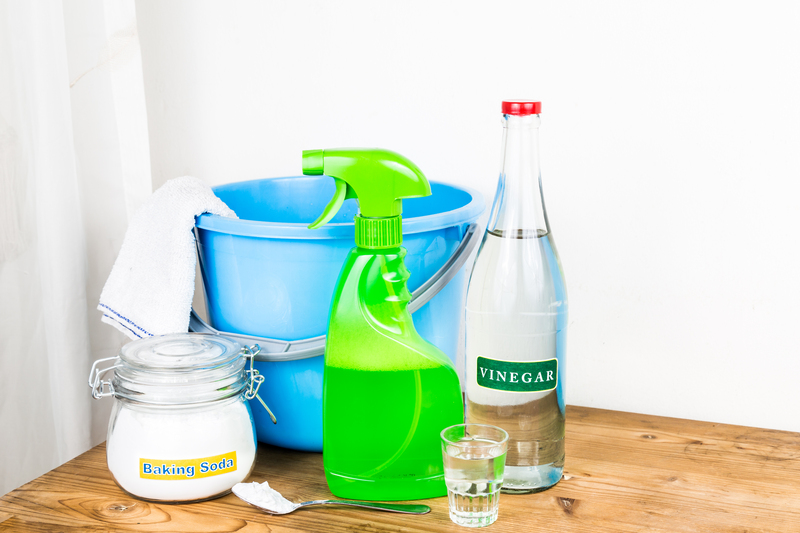Green Cleaning for Modern Workspaces
Posted on 12/11/2024
In today's environmentally conscious world, modern workspaces have an increasing responsibility to incorporate green practices. One essential area of focus is the implementation of green cleaning solutions. Green cleaning refers to the use of methods and products that are environmentally friendly and promote a healthier workspace. This comprehensive guide delves into the advantages, methods, and recommendations for adopting green cleaning practices in modern offices.
Advantages of Green Cleaning
Green cleaning offers myriad benefits, both for the environment and the people who occupy the workspace.
1. Health Benefits
Traditional cleaning products often contain chemicals that can be harmful to the respiratory system, skin, and overall health of employees. Green cleaning products, on the other hand, use natural and non-toxic ingredients, reducing the risk of illness and allergic reactions. This creates a safer and healthier environment for everyone.
2. Environmental Impact
One of the principal reasons for switching to green cleaning is its positive impact on the environment. Eco-friendly cleaning products are biodegradable, derived from renewable resources, and often use recyclable packaging. By reducing the use of harmful chemicals that pollute water and soil, green cleaning helps in conserving ecosystems.
3. Cost Efficiency
Contrary to popular belief, green cleaning can be cost-effective in the long run. Eco-friendly cleaning products are often concentrated, requiring smaller quantities per use. Additionally, creating a healthier work environment can reduce sick days and increase productivity, leading to indirect financial benefits.
4. Brand Image
Adopting green cleaning practices can significantly enhance a company's brand image. It shows commitment to sustainability and social responsibility, qualities that are highly valued by clients, employees, and investors alike.

Transitioning to Green Cleaning
Switching from traditional cleaning methods to green cleaning involves a series of well-planned steps. Here are key strategies for a seamless transition:
1. Assess Current Cleaning Practices
Begin with a comprehensive assessment of current cleaning practices. Identify areas where traditional chemicals are used and recognize opportunities for eco-friendly alternatives. This audit will help in pinpointing specific products and practices that need replacement or improvement.
2. Choose the Right Products
Selecting the right green cleaning products is crucial. Look for certifications such as Green Seal, EcoLogo, and EPA Safer Choice, which ensure that the products meet stringent environmental and health standards. Additionally, consider products made from natural ingredients like vinegar, baking soda, and essential oils.
3. Train Cleaning Staff
Training is essential to ensure that the cleaning staff understands and effectively uses eco-friendly products. Educate them about the benefits, correct usage, and disposal methods of green cleaning products. Proper training ensures that the transition is efficient and effective.
4. Implement Green Cleaning Guidelines
Establish a comprehensive set of guidelines that outline the green cleaning practices. Include procedures for waste reduction, recycling, and proper disposal of cleaning materials. This will standardize green cleaning practices across the organization.
Popular Green Cleaning Methods
Green cleaning methods often employ simple, yet effective techniques that can be easily integrated into existing cleaning routines:
1. Natural All-Purpose Cleaners
Create all-purpose cleaners using natural ingredients like vinegar and water, which can be used to clean various surfaces such as countertops, desks, and windows. Add a few drops of essential oils for a pleasant fragrance and additional antibacterial properties.
2. Microfiber Cloths
Microfiber cloths are highly effective in trapping dust and bacteria without the need for chemical cleaners. They can be washed and reused multiple times, reducing waste and lowering costs.
3. Steam Cleaning
Steam cleaning uses high-temperature steam to sanitize surfaces without chemicals. It's particularly effective for carpets, upholstery, and bathrooms, killing germs and bacteria while being completely eco-friendly.
4. Green Janitorial Services
Outsource cleaning services to companies that specialize in green cleaning. These services have trained staff and access to specialized eco-friendly products, ensuring a professional and thorough cleaning.
Implementing a Green Cleaning Program
Introducing a green cleaning program within the organization requires a structured approach. Here's how to implement it successfully:
1. Set Clear Goals
Define the objectives of your green cleaning program. Whether it's to reduce the use of harmful chemicals, improve indoor air quality, or minimize environmental footprint, clear goals will guide the implementation process.
2. Engage Stakeholders
Involve key stakeholders, including employees, management, and cleaning staff, from the outset. Their buy-in is vital for the successful adoption of the program. Conduct awareness sessions to inform them about the benefits and importance of green cleaning.
3. Monitor and Evaluate
Implement a system to regularly monitor and evaluate the effectiveness of the green cleaning program. Conduct periodic reviews to assess compliance with guidelines and identify areas for improvement. Use feedback to refine and enhance the program continuously.
4. Promote and Celebrate Success
Promote the green cleaning initiatives within the organization and to external stakeholders. Highlight the achievements through internal communications, social media, and company websites. Celebrating success reinforces the commitment to sustainability and encourages continuous improvement.

Common Challenges and Solutions
Transitioning to green cleaning comes with its set of challenges. Here's how to navigate them:
1. Resistance to Change
Employees and cleaning staff may resist the switch to green cleaning due to unfamiliarity with new products and methods. Address this by providing comprehensive training and demonstrating the benefits of the new practices.
2. Initial Costs
The initial investment for green cleaning products can be higher compared to traditional ones. Highlight the long-term savings and health benefits to justify the investment. Utilize bulk buying and vendor partnerships to reduce costs.
3. Product Efficacy
Concerns about the effectiveness of eco-friendly products are common. Choose certified products that meet high environmental and performance standards. Conduct trials to prove their efficacy before full-scale implementation.
Final Thoughts
Green cleaning is more than just a trend; it's a meaningful commitment to a sustainable and healthy future for all. Adopting green cleaning practices in modern workspaces not only protects the environment but also fosters a healthier, more productive work environment. By transitioning to eco-friendly products, training staff, and implementing structured guidelines, organizations can successfully embrace green cleaning. Overcoming challenges through strategic planning and stakeholder engagement ensures the longevity and effectiveness of these initiatives. Let green cleaning be a testament to your organization's dedication to sustainability and well-being.
Remember, every small step towards green cleaning makes a significant impact on our planet. Embrace the change and lead by example in creating a cleaner, greener, and healthier office environment.









